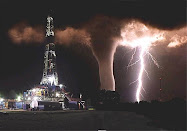What is the matter with our leaders, our industry chiefs, and our money people? Can’t they see they are ruining the planet with their greed, using B A D energy sources when they could be using G O O D energy sources, if only they would learn to live with one less Rolls, one less mansion, maybe they don’t need to fly their private jets to Switzerland every weekend for skiing?
Maybe they don’t need to do any of those things. But maybe the idea that a little sacrifice on the part of a privileged minority would save the world and solve the energy crisis is a lie. In fact, it’s a whopper. But to see just how B A D this whopper is, just where and how the inhabitants of this planet got off the curve of G O O D energy behavior, we have to do the numbers.
Last blog we did the basic physics. This blog we do the numbers. Next blog we look at the solutions – not the usual set, but one pretty G O O D set, so at least we have an idea of the right direction to march forward.
When I researched these numbers I found that every source has a viewpoint, a set of assumptions and uses a measurement system that is incompatible with every other authority. Barrels of oil, quadrillions of BTU’s, tons of coal, terrawatts of electrical power, all the units make for confusion and misinformation. First, let’s get everything into the same units. Energy is force times distance, and if the force is in newtons and the distance is in meters, the energy will be in joules. We are talking about the whole planet, so we will be using a bigger unit, 1,000,000,000,000,000,000 joules, or 1018 joules, or EJ. So I can now say the world used 471 EJ of energy in the year 2004 (we did).
Power is energy per unit time. One joule per second is 1 watt. 1000 watts per second sustained over an hour is 3,600,000 watts, or 1 kilowatt hour, or KWH. This costs about $.17 cents in my home town in 2008. An electric motor rated 1 horsepower will use .750 KWH. In Germany a 200 HP engine will be rated 150 KWH. But we are talking about the world, and we need bigger units. A terawatt hour is 1,000,000,000,000 watt hours ( 1 TWH). So now I can tell you that in 2005 the world generated 138,900 TWH.
Stored energy is in EJ. Electric power is in TWH. OK?
In the G O O D ole’ year of 1900, total power consumption on this planet was 23 EJ, almost entirely burned wood or coal. In 2004 it was 471 EJ, roughly 20 times as much. In 1900 you heated a small house with 5 people in it, most of who wore woolies all winter, and traveled by horse or by ship, if you went any distance. The iceman delivered ice cut from a frozen lake in the winter time and kept through the summer months in barns insulated with hay bales. There were about 1.6 billion humans on the planet. In 2005 there were 6 billion. Two things are obvious: people use a lot more power per person now and there are a lot more people. Looking across the world, we see a linear increase in power used per capita as the standard of living rises in third world countries. One of their first projects is roads, and the next is rural electrification, followed by mining, industry and advanced transportation and communication, both military and civilian. There is no progress without power. Kill the power and you kill the people. You can feed a village without much power, but you will have a country of disconnected and impoverished villagers, certainly not a nation. Your neighbor will either overrun you or attract away your most valuable citizens. “You will be assimilated, resistance is futile.”
In 2005, of the 471 EJ of energy consumed, 86% came from fossil fuels, about half of that from petroleum and its derivatives (38% of the total 471 EJ). The balance was, with a negligible error, all coal. All the alternative sources, wood, solar, wind, amounted to 0.85%, a number so small that the error in estimated the coal used completely swamps it.
Why was this? Is it because, when it comes to generating power, there is no fuel like and old fuel? Is all this fossil fuel so plentiful among the energy available to us that we can’t avoid using it?
Keeping these numbers in mind, let’s look at what sources we have available. I will not distinguish between “proven accessible reserves” which are funny numbers generated to highlight our scarcity, and the actual deposits, because I have every confidence that if we need the deposits we will get at them.
We have roughly 998 billion short tons of coal left near or at the surface, each worth about 26 trillion joules. We have another 1600 billion short tons of coal deep in the earth that can be converted to energy in place, without digging. Coal is the most plentiful fossil fuel at roughly 290,000 EJ. There may as much as 100,000 EJ of oil and, if we count the Arctic clathrates, another 100,000 EJ of gas. That’s a total of 390,000 EJ of stored sunlight in the ground. Right now we can get at maybe 10% of it, or 39,000 EJ. Assuming we burn it at the rate of 600 EJ per year, that’s about 65 years of fossil energy.
Uranium is created only in dying stars. It’s their fossilized bones. We can estimate the amount of radioactives in the Earth with better accuracy than we can the fossil fuels, because there is only one way it is created, and we can do the math. There is 2,500,000 EJ of uranium left in the planet. The nice thing is, not only is that 4,166 years worth, if we burned nothing else, but if we decide to use breeder reactors instead of the enriched uranium boiling water types, we will never run out of fuel. They make plutonium while they burn uranium. There is no carbon dioxide, no acid rain and no waiting for the wind to blow. It does not make sense that we have so much uranium energy and we only use it for 6.4% of our power in 2005, and that fraction is not growing. Forget the “problem” about storing spent uranium. You don’t trust the oil company propaganda do you? We are going to bury it where it came from - deep in the earth.
But wait, what about the other source, the sun? If we are looking at the stored sunlight in the form of fossil fuels, why not look at that lovely, but treacherous star, our sun, the biggest nuclear reactor in the neighborhood?
The sun puts out staggering amounts of energy. By the time sunlight travels 93 million miles to Earth, it is still giving out 1366 watts for every square meter. That’s radio waves, infrared, visible and ultraviolet light. About half that reaches the ground, which is still one horsepower per square meter. In fact, the Earth intercepts 3,800,000 EJ from the sun every year. That is another staggering number compared with the puny amount we need – 600 EJ. Of course, we can’t cover every square meter of the planet with solar collectors … or can we? Freeman Dyson, a very shrewd and respected physicist, speculated that advanced civilizations (ours is NOT very advanced yet!) will need so much energy that they will deconstruct their solar systems to build a sphere around their star, in order not to waste any of that precious energy. That’s called a Dyson Sphere. Of course it takes staggering amounts of energy to control, not just the planetary environment, but the disassembly of, say, Jupiter, and then lugging the fragments into a convenient orbit. That’s why really advanced civilizations need so much power. Power is control and control is wealth for an advancing civilization. Those folks are real masters of their systems, not just huddling on a tiny planet worrying about running out of oil.
Well, I guess we need to be a bit more modest. Just a tiny fraction of one percent of the incoming solar energy would be enough for us to get by nicely, until we get more ambitious.
All this points up two things:
- Our use of power is way, way out of balance with what is available. We need to align our use of energy with our resources.
- Why the #@%! aren’t we doing a lot more with solar power? The wind, the waves, the ocean temperature differentials, all capture solar power. We just need a way to collect it and to store it.
More on that in the next blog.


No comments:
Post a Comment